
Bring a Slice of The Tropics To Your Backyard With Guava Trees.
Published: 10/04/2024 | Updated: 09/06/2024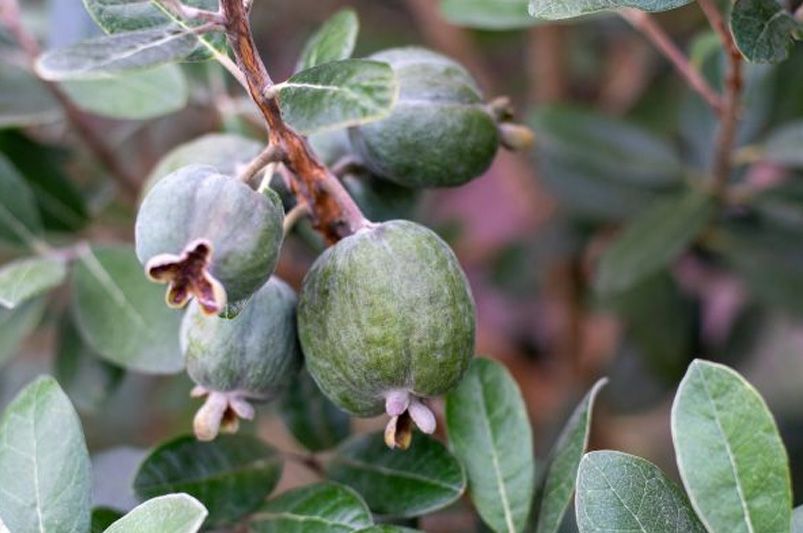
Join the thousands of homeowners from every corner of the nation who have found joy, relaxation, and happiness in their outdoor spaces with the help of Shrubhub Landscaping services.
The guava fruit tree, or Psidium guajava, is uncommon in North America and is mostly grown in tropical and subtropical regions. They can be found in Florida, Hawaii, the Virgin Islands, and a few sheltered locations in Texas and California in the United States. Though mature trees may withstand brief cold spells, the trees are extremely susceptible to frost and will die if frozen when they are young.


Still, the shrubs are pretty and yield sweet, juicy, ripe guava fruits that taste great either fresh or cooked into desserts. If you have enough knowledge about guava trees, you may cultivate these little trees in a greenhouse or sunroom and enjoy the many health advantages of their fruits, which are high in vitamin C.
Guava Fruit
The guava fruit is found on a tiny tree with a robust trunk that has one or more stems and a wide, short canopy. The guava tree is an intriguing plant with long, 3-to-7-inch (7.5–18 cm) serrated leaves and mottled, greenish-colored bark. White, 1-inch (2.5 cm) blossoms on guava trees bear tiny, spherical, oval, or pear-shaped fruits. More exactly, these are soft-fleshed berries that can be white, pink, yellow, or even red. Depending on the variety, the taste can range from sour and acidic to rich and sweet.
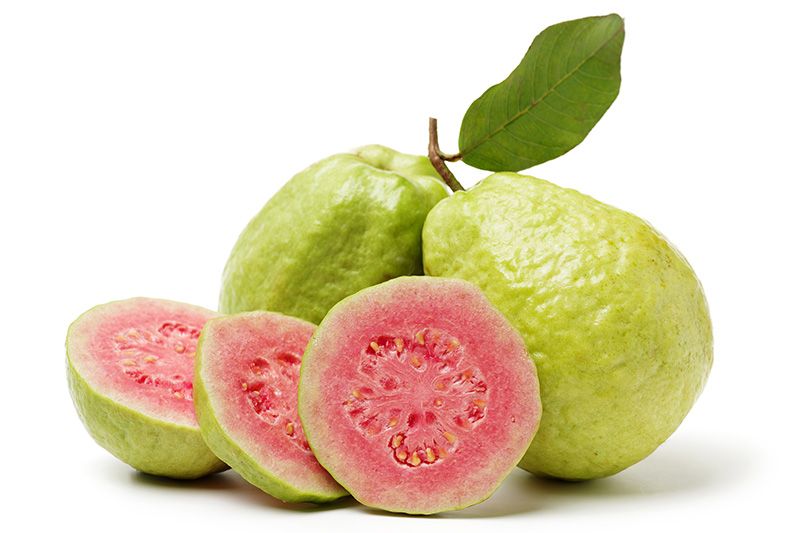
Barbie Pink Guava
One of the most charming Guava varieties has to be the adorably named Barbie Pink Guava. The tropically delectable Barbie Pink Guava Tree (Psidium guajava 'Barbie Pink') will quench your thirst while captivating you with its eye-catching blossoms. Well cared for, it will produce fruit that is lime green in color along with luscious glossy leaves! Cut open a smooth green-skinned fruit to reveal the deliciously vibrant pink watermelon centers, then consume the entire fruit—rind and all!
When the paintbrush blooms open, you and all the pollinators in your community will be delighted by the exquisite floral show. Perfect for a home garden, the fruit ripens all year long rather than all at once! The skin and flesh are vivid, and have a floral scent, a sweet taste, and a smooth, creamy texture with a subtle crunch from the seeds.
The juicy, fragrant, brilliant pink pulp is ideal for adding tropical fruit flavor and vibrant color to savory or sweet dishes, desserts, or liquids! These self-pollinating trees are refreshing and healthful, and you'll have lots of them to use in all your favorite dishes.
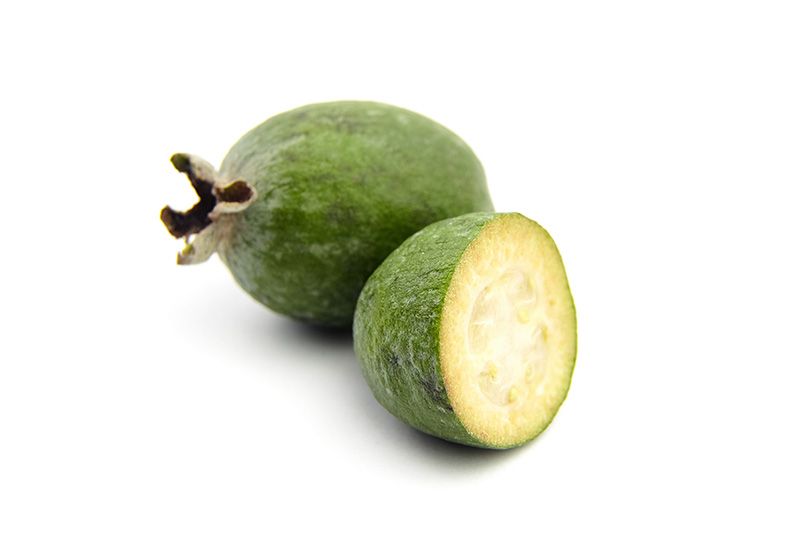
Pineapple Guava
Pineapple guava trees are stunning and abundant, producing a delicious fruit with a taste and appearance similar to guavas. Acca sellowiana, also referred to as feijoa, is distinct from a common guava tree (Psidium guajava) while belonging to the same family.
Pineapple guavas can be trimmed to resemble miniature trees with a central trunk or be grown as multi-stemmed shrubs. Its round, silver-green foliage is evergreen and adds interest all year long. Bright, colorful flowers appear throughout the spring. Bright red stamens with spikes are encircled by pink and white petals. These vivid, fragrant blossoms draw a variety of birds and are tasty to people as well. Because they grow slowly, pineapple guava trees are perfect for pots and tiny spaces.
Growing a pineapple guava tree is a simple task. These trees require little care and are resistant to illnesses and pests. Though it's rare, they might have issues with fruit bugs or black scale. Make sure to plant them in a safe area because they are susceptible to windy weather.
While growing a second tree as a cross-pollinator will boost the fruit production of both plants, many cultivars are thought to be self-fertile. Between the two trees, hand pollination can be done to ensure a bountiful crop.
Growth Conditions for Guava Trees
For optimal flowering and fruit production, guava plants grow in any type of soil as long as it has sufficient drainage and full sun. Tropical to subtropical in climate, guava fruit trees can grow up to 20 feet (6 meters) in height. In most US climate zones, growing guavas outside are not suitable and require cold protection. Even in sunny, warm climates with occasional cold snaps, they need protection from chilly winds.
Cultivating Guava Trees from Seeds
A fruiting tree may take up to eight years to grow from seed, and the plants produced are not faithful to the parent. Consequently, for guava fruit trees, cuttings, and layering are more frequently utilized as propagation techniques. On the other hand, cultivating guava seeds is an enjoyable endeavor that yields an intriguing plant.
A fresh guava fruit must be used to collect the seed, then the flesh must be soaked off. While germination can take up to eight weeks, the seeds can be used for months after that. Before planting, bring the seeds to a boil for five minutes to soften their tough outer layer and promote germination.
Maintenance
Should you be fortunate enough to reside in an area where guava trees may be grown outdoors, the tree needs to be planted on soil that drains properly and allows for ample root space. When the guava tree is young, fertilize it every one to two months. As the tree becomes older, fertilize it three to four times a year.
For maximum fruit production, guava trees require high levels of nitrogen, phosphoric acid, and potash in addition to a small amount of magnesium. For instance, a 6-6-6-2 formula can be mixed into the soil shortly before the growing season begins, and it can then be evenly spaced out three times while the plant is growing.
After planting, give your mature trees regular waterings, and then maintain a moderate moisture level for the fruiting and flowering seasons. Guava fruit tree maintenance is comparable to that of other fruiting trees after it is established.
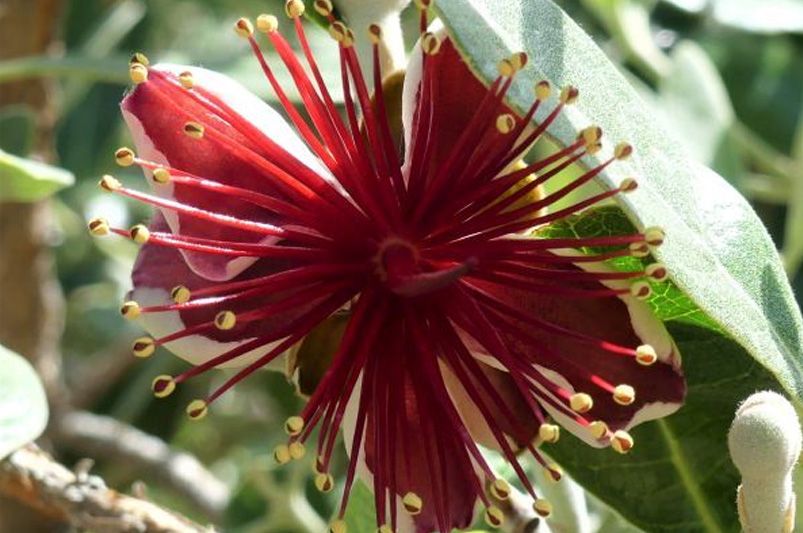
Where to Plant Guava Trees
For growth, guava trees require a lot of sunlight and humidity. Select a spot where there will be plenty of room for the guava tree to grow, protection from the wind, and separation from other trees or buildings. Guava trees should be 16–26 feet apart.
Growing Indoors
This tree can also be grown entirely or partially indoors, particularly if you reside in an area that experiences cold winters. However, since indoor guava trees require lots of sunlight, humid conditions, and at least one other tree to pollinate to grow fruit, there's never a certainty that they will. Guava should be planted in a large, wide pot and set on a small, wheeled platform so that it may be readily moved around as needed. Select a window that receives at least six hours of sunlight per day for this tree.
Fertilizer
The tree should be fertilized every few months. Fertilizing a tree once every quarter after it is established usually suffices. Since the tree will be dormant throughout the colder months, fertilizer is not necessary. Guavas requires an additional magnesium and iron supplement. Think about using a slow-releasing fertilizer like 6-6-6 or 5-5-5.
How to Prune Guava Trees
To maintain the health of your guava tree, pruning is required. To ensure that any diseased or damaged branches do not hinder the tree's growth, trim them back with sterilized pruning shears. Prune your tree at the end of winter every other year if you wish to maintain it at a certain height. Observe any newly formed buds and make cuts above them to avoid cutting off newly growing vegetation.
Problems and Pests
Several pests, like mealybugs, fruit flies, and whiteflies can bother Guava trees. Periodically inspect the tree and guava leaves to prevent an infestation before it becomes too serious. Insecticidal soap or neem oil can aid in the management of an invasive organism. Like any heat-tolerant plant, it can also be susceptible to root rot so ensure it is placed in well-draining soil.
Harvesting and Crop Yields
A few years after planting, guava trees typically start to bear fruit. Fruits have an oval form and range in size from a softball to an apricot. As the fruit ripens, its green skin turns yellowish. When the guava skin yields slightly to light pressure, it is ready to be harvested. The guava can be juiced, used for jams and jellies, or eaten raw; just make sure the seeds are removed.
Propagation
Guava trees can be easily multiplied by seed. Before planting the fruit's seeds in damp soil, remove the seeds and soak them in warm water for at least a day. Taking cuttings from branches is an additional choice, but it takes more time, effort, and expertise. To properly propagate cuttings, you'll need a section of the tree's bark and a rooting hormone.
Growing Guava Companion Plants
The ideal plants to grow with guava trees are citrus trees, borage, chives, marigolds, and comfrey. Cucumber, eggplant, and potato are some of the worst plant companions.
It's important to remember that companion plants for fruit trees are meant to develop a vibrant environment. By the way, this is referred to as a guild. As a result, you might come across mentions of guilds for peach or apple trees. This is your fruit tree's surrounding flora, including bushes, plants, and other trees. For some trees, the selection of companion plants may be limited to one or two, but nearly any plant that discourages pests draws pollinators, or improves the soil will work well as a partner. Additionally, more is usually better. Your entire garden and fruit trees will benefit if you can establish a modest but diversified pollination habitat.
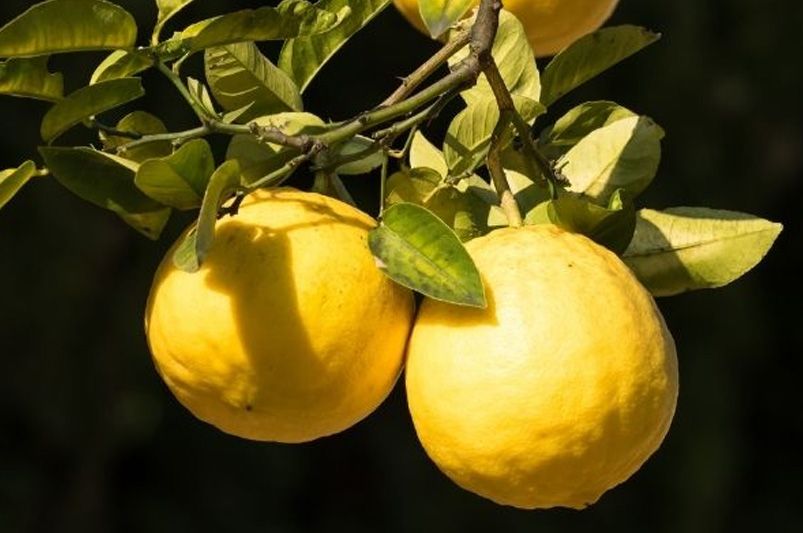
Lemon Trees
Some of the best companions for Guava trees are lemon trees like the Ponderosa Lemon Tree. Companion planting citrus trees is advantageous as it aids in the prevention of pests that could damage your citrus plants. That's not all, though. There are numerous other advantages to gardening.
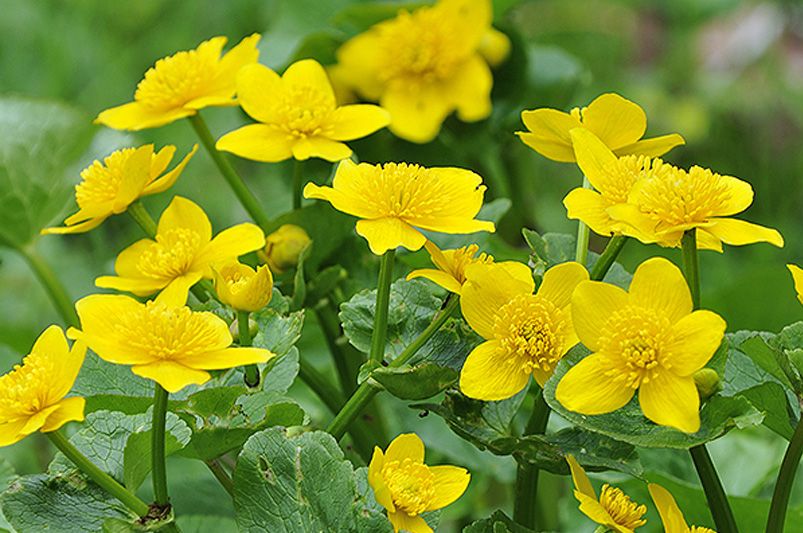
Marigolds
Another excellent companion plant for Guava trees or fruit trees in general is Marigolds. This is for several reasons. Marigolds are excellent companion plants primarily because they draw helpful insects into the area. They also act as a crop that certain pests use as a trap. They can even potentially aid in lowering toxic nematodes in the soil and being used as mulch to enrich the soil. Finally, Marigolds provide excellent ground cover without competing for nutrition.
Bring Some Tropical Charm to Your Space with Guava Trees
Whether you desire to grow a Guava tree for its striking appearance or its delectable fruits, these tropical plants make a delightful statement in any outdoor space. If you're ready to add some tropical flair to your space, join the ranks of homeowners who have discovered the joy of Guava cultivation and even if you don't happen to live in a tropical climate, with the proper care, attention, and guidance from the experts like Shrubhub, your guava plants can grow as abundantly indoors as they would in warmer climates.


